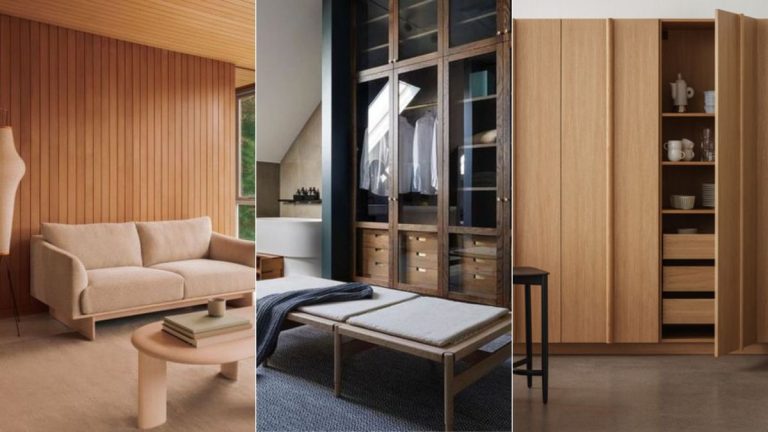Faced with so many design factors and considerations, designing a home can often feel like an intimidating task. But one important, yet often overlooked, aspect is choosing features that make for a low-maintenance home, such as durability, ease of cleaning, and increased ease of navigating the space.
The integration of these highly practical elements and features allows for functional spaces with minimal maintenance requirements, which not only improves the aesthetics of your home but also greatly reduces the need for frequent upgrades and cleaning.
With a few intentional design decisions and home additions, you can create a low-maintenance space without sacrificing style.
Features that make for a low-maintenance home
“The first thing you should do is define what low-maintenance means to you and your lifestyle,” advises Ryan Culligan, CEO and founder of MoveBuddha. “Be realistic about the amount of time and energy you can and want to devote to household chores. Keep this in mind when making design choices and home product purchases.”
1. High-quality, low-maintenance materials
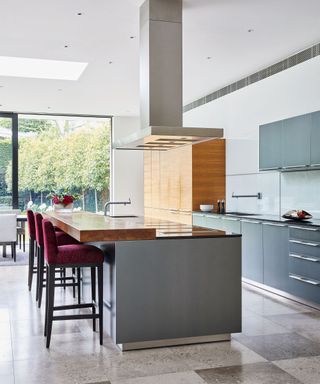
(Image courtesy of Davide Lovatti)
“Creating a low-maintenance space may require a little extra work up front, but it's worth it in the long run, so opting for durable, low-maintenance materials is ideal,” says Ryan Culligan.
Invest in quality materials
“A key aspect of considering a low-maintenance home is using quality materials. This includes everything from flooring and countertops to fixtures and appliances,” says Keith Sant, founder and CEO of Kind House Buyers. “Investing in quality materials will help reduce the need for repairs and replacements in the future.”
Durable materials like quartz countertops, porcelain tile, and vinyl flooring last longer and require minimal maintenance than delicate materials like marble, hardwood, and carpet. Good design and finishes in your kitchen and bathrooms can help prevent leaks, rust, and mineral buildup. “Choose siding materials like brick, stone, and fiber cement over wood,” advises Adrian Pedraza, owner of The California Home Buyer. “Wood siding requires frequent repainting and sealing, but inorganic siding materials resist weathering and wear. Fiber-cement siding is more durable and can achieve a wood-like look.”
Plus, choosing high-quality, timeless designs rather than trend-based furniture will save you both time and money in the long run, as features will need less constant updating, helping your home maintain its value and appeal over time.
Choose surfaces that are easy to clean
When choosing materials, it's important to consider durability, ease of cleaning, and resistance to wear and distortion. In the long run, this initial investment can pay dividends in the form of a home that stays looking and functioning well.
Opt for low-maintenance countertops like quartz or granite, which are porous and resistant to stains and bacteria. Opting for tile or laminate flooring instead of carpeting will reduce the hassle of vacuuming and steam cleaning. They also are easier to clean, as they are not as scratch-resistant as hardwood. “Furniture upholstered in stain-resistant fabrics like Crypton or Sunbrella repel liquids and can be easily cleaned with soap and water. Also, choosing a sofa with a removable cover that can be washed in the washing machine will save you time and effort in maintaining its appearance,” advises Jonathan Faccone, interior designer and founder of Halo Homebuyers. Similarly, choosing solid wood or metal furniture instead of particle board will reduce the amount of maintenance your items require and make them last longer. When it comes to kitchen appliances, stainless steel is a great low-maintenance choice. Not only do these appliances have a stylish and modern look, but their smooth, stain-resistant surface makes it easier and faster to clean stainless steel appliances, unlike plastic or painted finishes that show fingerprints and splatter marks. Additionally, Jonathan Facone says, “We recommend installing kitchen backsplashes made of materials such as glass or stainless steel, which are easy to wipe down and require minimal maintenance. These materials are stain-resistant and heat-resistant, making them ideal for use in kitchens. It is important to avoid porous materials such as marble and natural stone, as they are prone to staining and require regular sealing.” Finally, Keith Santo recommends, “When choosing finishes such as paint and hardware, choose ones with a satin or semi-gloss finish, as they are easy to clean and resistant to scuffs and stains. For hardware, choose finishes such as brushed nickel or stainless steel, which are not only easy to clean but also have a timeless design.”
2. Minimalist design
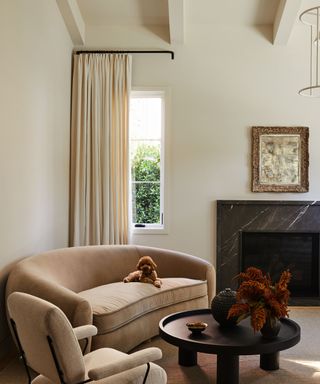
(Image provided by: STUDIO LIFE/STYLE)
Consider adopting a minimalist approach to your home design, which will not only create a modern and serene atmosphere, but also make cleaning and organizing more efficient.
Being conscious about what items should be in your space will help you leave it tidy and reduce the need for regular decluttering. It will also greatly reduce the amount of dust and dirt that can accumulate.
Pavel Khaykin, founder and CEO of Pavel Buys Houses, adds: “Decorating your entire home in neutral colors will help create a cohesive, low-maintenance look. Neutral color palettes like white, beige, and gray not only offer a timeless beauty, but they also hide dirt and wear better than louder colors. This saves you the time and effort of having to frequently repaint and clean walls, especially in high-traffic areas.”
Smart Home Features
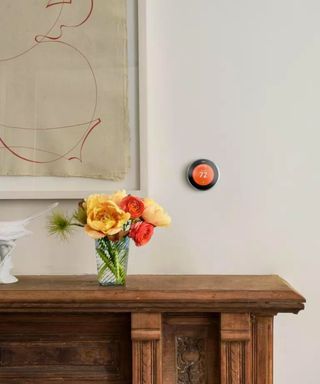
(Image courtesy of Nest)
“Smart home technology has transformed the way we live, but it can also have a huge impact on creating a low-maintenance home,” says Keith Santo. “Features like automatic thermostats, lighting, and security systems can reduce the time and effort spent maintaining a home. Plus, these features can help you save on your energy bills by optimizing energy usage and detecting potential issues before they become bigger problems.”
A smart home essential is the ability to be remotely controlled, reducing the need for manual adjustments and saving time on maintenance tasks. It is also ideal for those who require a more accessible home, such as those with mobility issues. However, it is important to choose high-quality, reliable technology to avoid potential technical issues that could result in frequent maintenance.
4. Storage Solutions
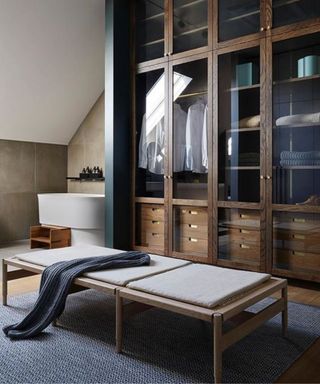
(Image courtesy of Kitchen Architecture)
Another key element of a low-maintenance home is organization and storage. Without these, it's easy for clutter to accumulate, making spaces messy and making it hard to find things and utilise the space. Investing in storage solutions like built-in cabinets, shelves and closets can make it easy to keep your belongings organised and out of sight.
Davin Eberhardt, founder of Nature of Home, recommends opting for discreet storage solutions, like furniture with hidden storage or under-stair storage. “Not only will this help organize your space, it'll also make cleaning more efficient, since you won't have to dust and organize as many items.”
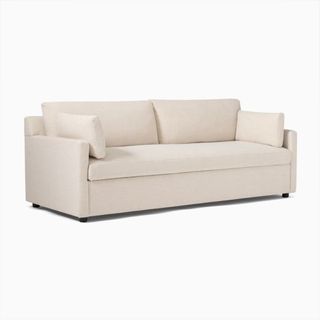
$1,799
This sofa has the ability to lift the seat with a toggle to provide ample separate storage space.
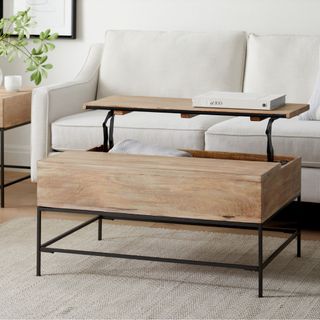
Industrial Storage Pop-Up Coffee Table
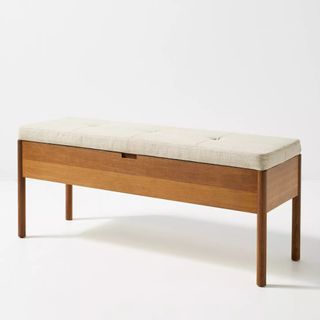
Was $598.00, now $358.80
This storage bench is perfect for easy access to items like shoes in the hallway or extra blankets in the bedroom.
5. Functional design
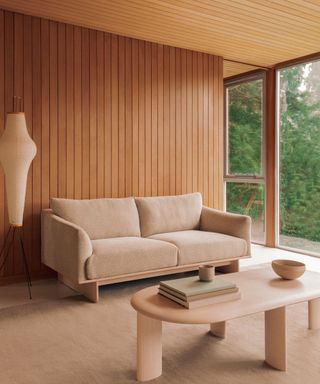
(Image credit: L. Ercolani)
Designing with functionality in mind creates more efficient, lower maintenance living spaces – and that means choosing a practical layout that allows for easy movement and access.
Open floor plans create the impression of spaciousness and feel less cluttered than compartmentalized spaces. Consider how you can strategically arrange your furniture to improve the flow of people in your home. Streamline your storage solutions to make it easier to manage your belongings and find items when you need them.
6. Proper insulation and ventilation
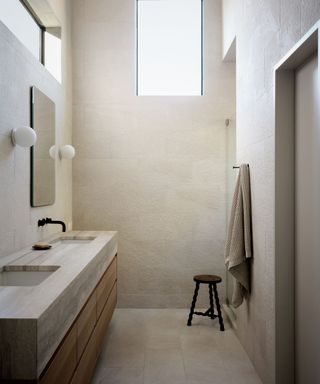
(Image courtesy of Emily Lauren Interiors)
“Proper insulation helps regulate the temperature inside a home and reduces strain on heating and cooling systems,” says Anna Coddington, principal interior designer at Archival Designs. “A well-insulated home can also prevent moisture buildup and damage caused by mold and mildew, saving homeowners from costly repairs and replacements down the line.”
“Installing exhaust fans in bathrooms and kitchens and regularly changing air filters can also significantly improve indoor air quality,” says Pavel Khaikin.
Investing in durable, easy-care materials, smart storage solutions, minimalist décor and smart home technology can make a big difference in creating a low-maintenance home. If accessibility is also a priority, consider future-proofing your home with improvements that will make the space more usable for the whole family.

